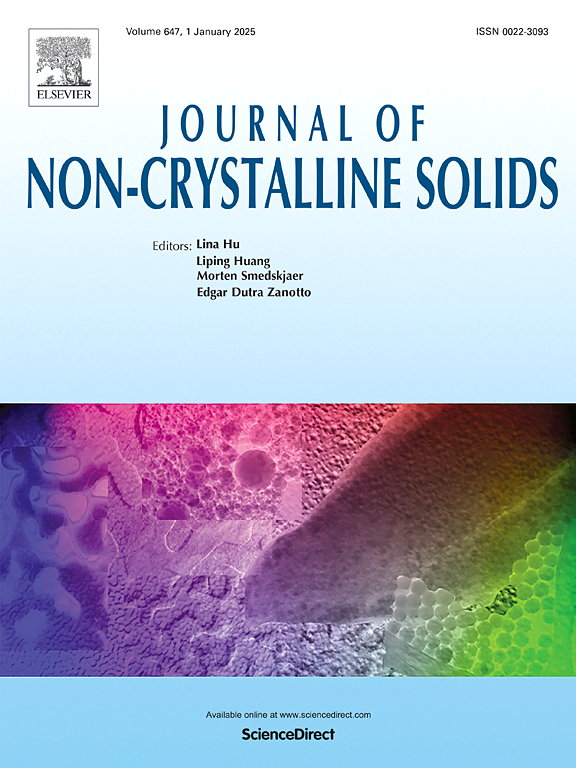用于硼中子捕获治疗设施的强度,热稳定性和高度透明的玻璃罩
IF 3.5
3区 材料科学
Q1 MATERIALS SCIENCE, CERAMICS
引用次数: 0
摘要
核设施,如BNCT室,需要能够同时衰减中子和伽马射线的屏蔽材料。因此,本研究推进了钡硼增强双功能伽马射线和热中子玻璃屏蔽的开发,为这种核环境提供了一种实用的解决方案。在不同的B2O3和BaO浓度(x=0、5、10和15 mol %, PZSBBa0、PZSBBa1、PZSBBa2和PZSBBa3)下,制备了(30+x)B2O3-(50-3x) na20 - 10zno - 10k20 - 2xbao玻璃组合物。B2O3和BaO的加入增强了玻璃的密度、网络连通性、热稳定性、机械强度和透明度。当γ射线能量分别为478、661.64、1173.23和1332.5 keV时,PZSBBa3玻璃的半值层分别减小到2.305、2.665、3.683和3.943 cm。此外,添加45 mol %的B2O3 (PZSBBa3)可使热中子衰减率提高96.6%。这些发现表明,PZSBBa3玻璃在核设施,特别是BNCT中,是一种很有前途的辐射屏蔽材料,标志着屏蔽材料的发展取得了重大进展。本文章由计算机程序翻译,如有差异,请以英文原文为准。
Strength, thermally stable, and highly transparent glass shields for boron neutron capture therapy facilities
Nuclear facilities, such as BNCT rooms, require shielding materials that can simultaneously attenuate neutrons and gamma rays. Accordingly, this study advances the development of dual-function gamma ray and thermal neutron glass shields reinforced with barium and boron, providing a practical solution for such nuclear environments. A glass composition of (30+x)B2O3-(50-3x)Na2O-10ZnO-10K2O-2xBaO was fabricated with varying B2O3 and BaO concentrations ( and 15 mol %, PZSBBa0, PZSBBa1, PZSBBa2, and PZSBBa3). The addition of B2O3 and BaO enhanced glass’s density, network connectivity, thermal stability, mechanical strength, and transparency. The half value layer of PZSBBa3 glass was minimized to 2.305, 2.665, 3.683, and 3.943 cm for gamma ray energies of 478, 661.64, 1173.23, and 1332.5 keV, respectively. Furthermore, adding 45 mol % of B2O3 (PZSBBa3) improved thermal neutron attenuation by 96.6 %. These findings position the fabricated PZSBBa3 glass as a promising radiation shield in nuclear facilities, particularly in BNCT, marking a significant progression in shielding material development.
求助全文
通过发布文献求助,成功后即可免费获取论文全文。
去求助
来源期刊

Journal of Non-crystalline Solids
工程技术-材料科学:硅酸盐
CiteScore
6.50
自引率
11.40%
发文量
576
审稿时长
35 days
期刊介绍:
The Journal of Non-Crystalline Solids publishes review articles, research papers, and Letters to the Editor on amorphous and glassy materials, including inorganic, organic, polymeric, hybrid and metallic systems. Papers on partially glassy materials, such as glass-ceramics and glass-matrix composites, and papers involving the liquid state are also included in so far as the properties of the liquid are relevant for the formation of the solid.
In all cases the papers must demonstrate both novelty and importance to the field, by way of significant advances in understanding or application of non-crystalline solids; in the case of Letters, a compelling case must also be made for expedited handling.
 求助内容:
求助内容: 应助结果提醒方式:
应助结果提醒方式:


